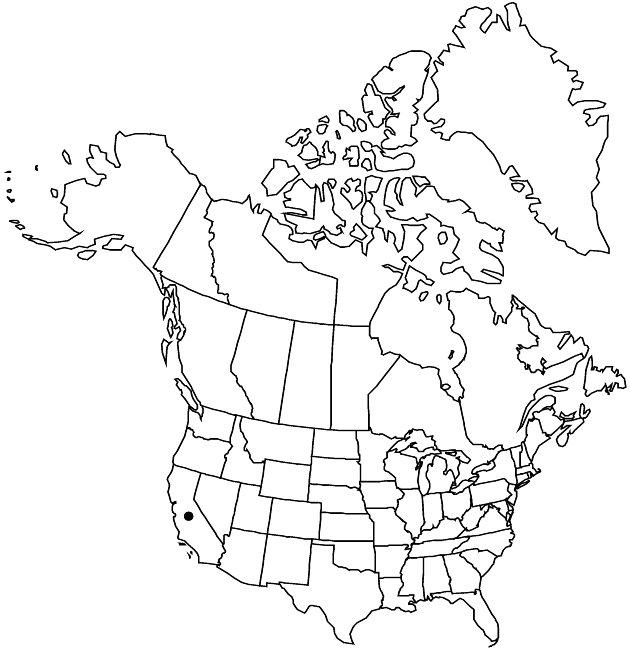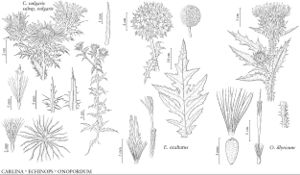Onopordum illyricum
Sp. Pl. 2: 827. 1753.
Plants 50–250 cm, herbage canescent-tomentose throughout. Stems: wings 0.5–2 cm wide. Leaves 10–50 cm, margins shallowly to ± deeply 1–2-pinnatifid with 8–10 pairs of triangular lobes. Heads mostly borne singly at branch tips. Involucres 30–60 mm diam (excluding spines) ± spheric, bases truncate to concave. Phyllaries lanceolate to ovate, bases 3–8 mm wide, glabrous or ± cobwebby-tomentose, spines to 5 mm. Corollas purple, 25–35 mm. Cypselae 4–5 mm; pappi of many whitish, plumose bristles 10–12 mm. 2n = 34 (France).
Phenology: Flowering summer (Jun–Aug).
Habitat: Grasslands, fields, roadsides, oak woodlands
Elevation: 200–500 m
Distribution

Introduced; Calif., s Europe (Mediterranean region), introduced in Australia.
Discussion
Illyrian thistle is considered to be a noxious weed in California where efforts to eradicate it from the state’s flora have been implemented. This species has also invaded rangelands in Australia, where it is introduced.
Selected References
None.
